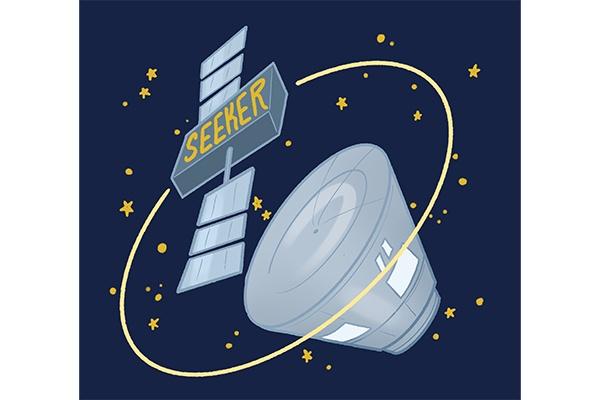
Photo Credit: Lauren Ibanez | Daily Texan Staff
Daily Texan | By: Rahi Dakwala
A navigating software developed by UT students for a NASA satellite is launching today with a resupply mission to the International Space Station.
The software was developed by members of the Texas Spacecraft Laboratory, including aerospace engineering senior Gavin Martin, Carson Schubert, electrical and computer engineering junior, Nihal Dhamani, computer science and astronomy senior, and Pratyush Singh, electrical and computer engineering senior.
The satellite, called Seeker 1, is part of a NASA project to design small spacecrafts that can fly around larger ones carrying humans to conduct damage inspections or provide servicing capabilities, Martin said.
In this mission, the Seeker satellite will perform specific maneuvers around the Northrop Grumman Cygnus Cargo Delivery Spacecraft, the large vehicle carrying cargo to the space station, Martin said.
“It is a technology demonstration mission to prove that (Seeker 1) can safely do the motions necessary for a small spacecraft to inspect larger and more expensive spacecrafts,” Martin said.
While the launch is today, the Seeker 1 demonstration will take place this summer once the resupply mission is complete and the Seeker and Cygnus spacecrafts are a safe distance apart from the Space Station, Schubert said.
The team’s software sends information to various navigational sensors on Seeker 1 to help it maneuver, Martin said.
“Our software lets Seeker 1 recognize Cygnus, the target spacecraft, and its location in relation to Seeker 1,” Martin said.
To train their software to identify and locate objects in space, the group used a 3D modeling software to create pictures of the target spacecraft, said Singh.
“We made pictures of Cygnus in various space conditions such as an Earth background or black background,” Singh said. “We also made other images containing a non-Cygnus spacecraft so that the (software) could learn to accurately identify Cygnus.”
After training the software, it was able to detect Cygnus with 96.5% accuracy, Martin said. Schubert said ultimately, these satellites can be used to improve the safety of future space exploration.
“For example, there are handrails that astronauts use while doing their spacewalk on the Space Station,” Schubert said. “Before the actual spacewalk, astronauts are sent out just to inspect the rails for damage. Now, small spacecrafts like Seeker could autonomously do these damage inspections before humans are sent out.”
NASA will use this mission to continue developing these small spacecrafts, Schubert said.
Original article at: http://dailytexanonline.com/2019/04/16/ut-students-develop-software-to-help-satellites-seek-objects



